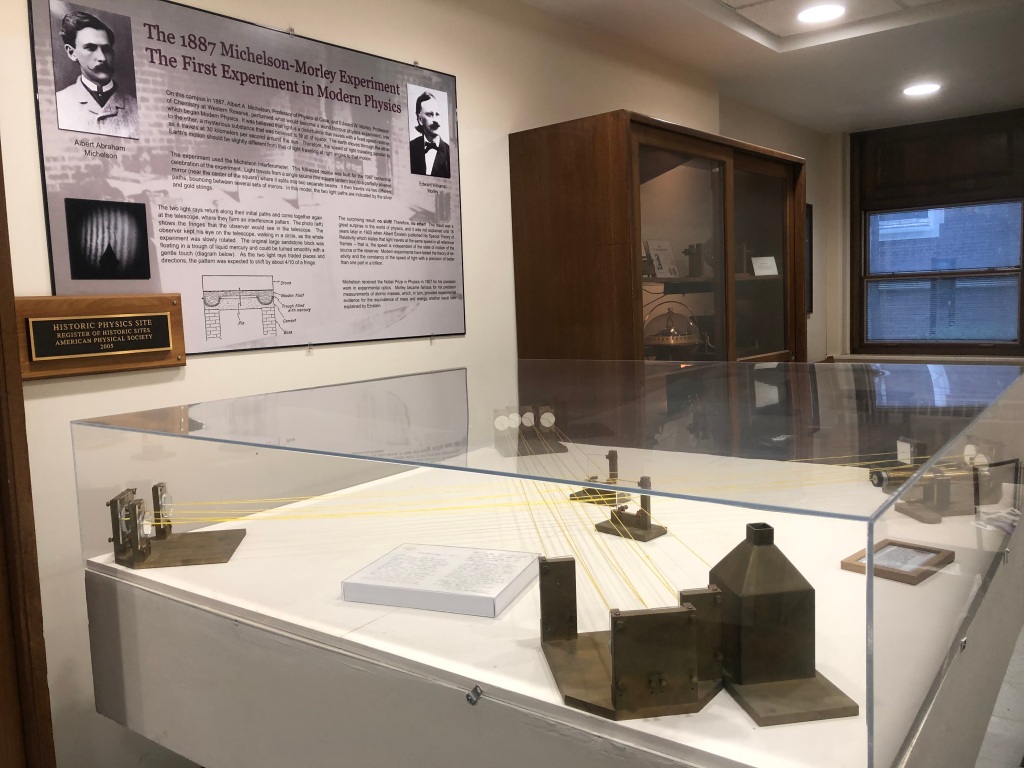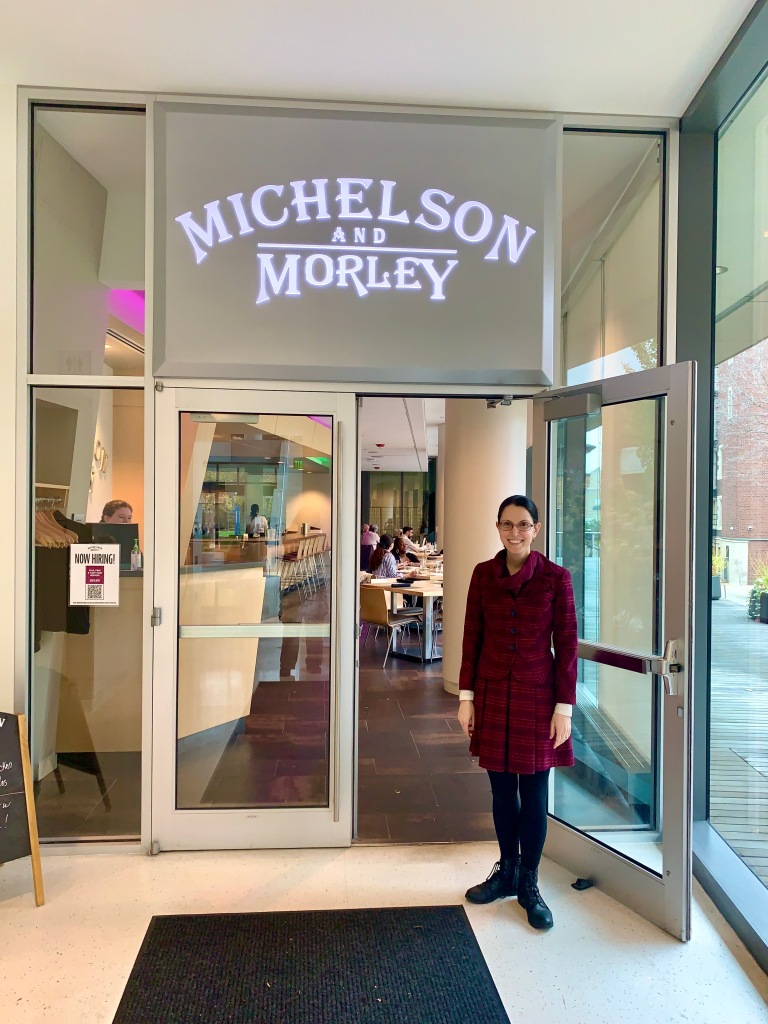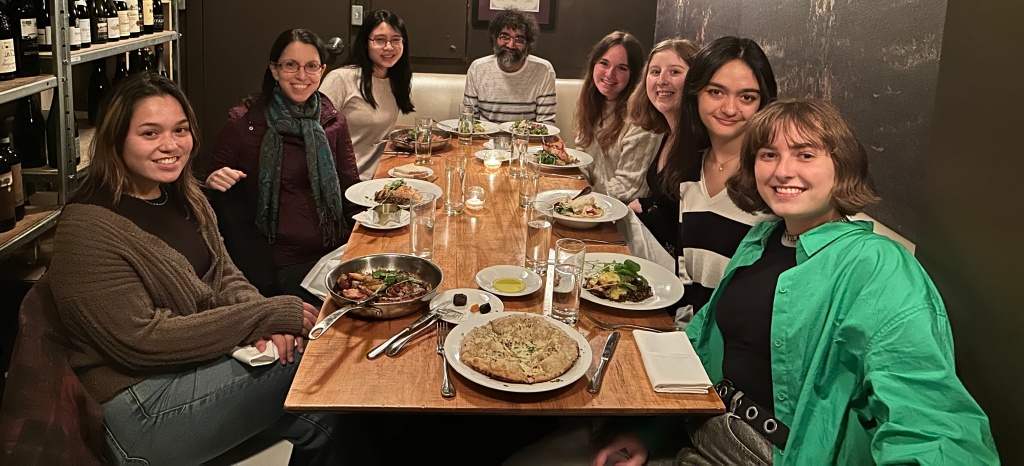One of the most immersive steampunk novels I’ve read winks at an experiment performed in a university I visited this month. The Watchmaker of Filigree Street, by Natasha Pulley, features a budding scientist named Grace Carrow. Grace attends Oxford as one of its few women students during the 1880s. To access the university’s Bodleian Library without an escort, she masquerades as male. The librarian grouses over her request.
“‘The American Journal of& Science – whatever do you want that for?’” As the novel points out, “The only books more difficult to get hold of than little American journals were first copies of [Isaac Newton’s masterpiece] Principia, which were chained to the desks.”
As a practitioner of quantum steampunk, I relish slipping back to this stage of intellectual history. The United States remained an infant, to centuries-old European countries. They looked down upon the US as an intellectual—as well as partially a literal—wilderness.1 Yet potential was budding, as Grace realized. She was studying an American experiment that paved the path for Einstein’s special theory of relativity.
How does light travel? Most influences propagate through media. For instance, ocean waves propagate in water. Sound propagates in air. The Victorians surmised that light similarly travels through a medium, which they called the luminiferous aether. Nobody, however, had detected the aether.
Albert A. Michelson and Edward W. Morley squared up to the task in 1887. Michelson, brought up in a Prussian immigrant family, worked as a professor at the Case School of Applied Science in Cleveland, Ohio. Morley taught chemistry at Western Reserve University, which shared its campus with the recent upstart Case. The two schools later merged to form Case Western Reserve University, which I visited this month.
We can intuit Michelson and Morley’s experiment by imagining two passengers on a (steam-driven, if you please) locomotive: Audrey and Baxter. Say that Audrey walks straight across the aisle, from one window to another. In the same time interval, and at the same speed relative to the train, Baxter walks down the aisle, from row to row of seats. The train carries both passengers in the direction in which Baxter walks.
Baxter travels farther than Audrey, as the figures below show. Covering a greater distance in the same time, he travels more quickly.
Replace each passenger with a beam of light, and replace the train with the aether. (The aether, Michelson and Morley reasoned, was moving relative to their lab as a train moves relative to the countryside. The reason was, the aether filled space and the Earth was moving through space. The Earth was moving through the aether, so the lab was moving through the aether, so the aether was moving relative to the lab.)
The scientists measured how quickly the “Audrey” beam of light traveled relative to the “Baxter” beam. The measurement relied on an apparatus that now bears the name of one of the experimentalists: the Michelson interferometer. To the scientists’ surprise, the Audrey beam traveled just as quickly as the Baxter beam. The aether didn’t carry either beam along as a train carries a passenger. Light can travel in a vacuum, without any need for a medium.

The American Physical Society, among other sources, calls Michelson and Morley’s collaboration “what might be regarded as the most famous failed experiment to date.” The experiment provided the first rigorous evidence that the aether doesn’t exist and that, no matter how you measure light’s speed, you’ll only ever observe one value for it (if you measure it accurately). Einstein’s special theory of relativity provided a theoretical underpinning for these observations in 1905. The theory provides predictions about two observers—such as Audrey and Baxter—who are moving relative to each other. As long as they aren’t accelerating, they agree about all physical laws, including the speed of light.
Morley garnered accolades across the rest of his decades-long appointment at Western Reserve University. Michelson quarreled with his university’s administration and eventually resettled at the University of Chicago. In 1907, he received the first Nobel Prize awarded to any American for physics. The citation highlighted “his optical precision instruments and the spectroscopic and metrological investigations carried out with their aid.”
Today, both scientists enjoy renown across Case Western Reserve University. Their names grace the sit-down restaurant in the multipurpose center, as well as a dormitory and a chemistry building. A fountain on the quad salutes their experiment. And stories about a symposium held in 1987—the experiment’s centennial—echo through the physics building.&
But Michelson and Morley’s spirit most suffuses the population. During my visit, I had the privilege and pleasure of dining with members of WiPAC, the university’s Women in Physics and Astronomy Club. A more curious, energetic group, I’ve rarely seen. Grace Carrow would find kindred spirits there.
With thanks to Harsh Mathur (pictured above), Patricia Princehouse, and Glenn Starkman, for their hospitality, as well as to the Case Western Reserve Department of Physics, the Institute for the Science of Origins, and the Gundzik Endowment.
Aside: If you visit Cleveland, visit its art museum! As Quantum Frontiers regulars know, I have a soft spot for ancient near-Eastern and ancient Egyptian art. I was impressed by the Cleveland Museum of Art’s artifacts from the reign of pharaoh Amenhotep III and the museum’s reliefs of the Egyptian queen Nefertiti. Also, boasting a statue of Gudea (a ruler of the ancient city-state of Lagash) and a relief from the palace of Assyrian kind Ashurnasirpal II, the museum is worth its ancient-near-Eastern salt.
1Not that Oxford enjoyed scientific renown during the Victorian era. As Cecil Rhodes—creator of the Rhodes Scholarship—opined then, “Wherever you turn your eye—except in science—an Oxford man is at the top of the tree.”






Comments